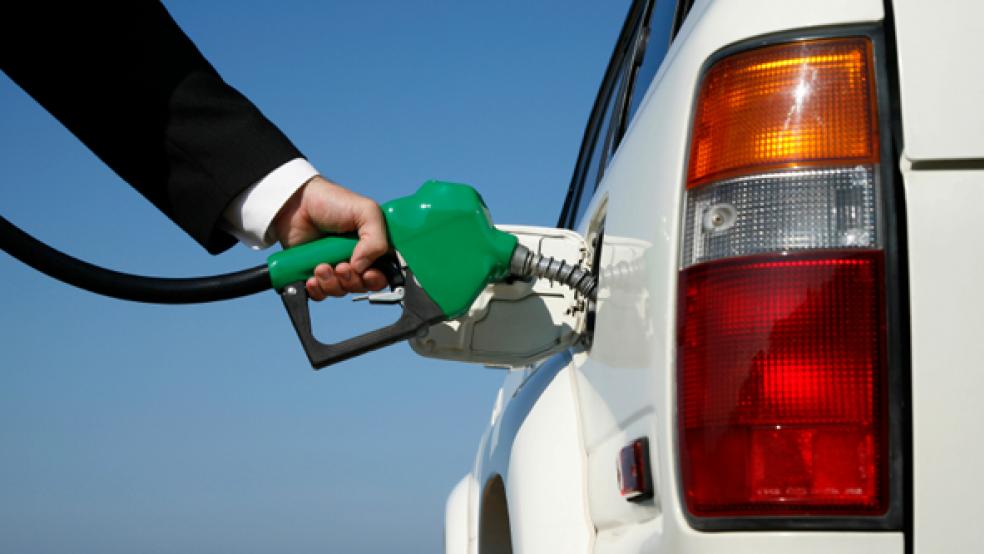Consumer pocketbooks will be a little fatter this November and December, thanks to gas prices, which are at their lowest level in three years this holiday season.
RELATED: SAUDIS IN A SNIT OVER OBAMA'S MIDEAST POLICIES
National average prices ticked up a few cents this week, but at a current $3.20 per gallon, they’re still more than 20 cents lower than they were a year ago. They’ve been on a downward trend since Labor Day. In fact, we’re paying the same amount today per gallon as we did in 1980—33 years ago, adjusted for inflation, when the average price was $1.13.
The drop in prices reflects a variety of factors including a seasonal slowdown in demand, a quieter-than-normal hurricane season in the Gulf, and increased domestic production. The United States is expected to pass Russia and Saudi Arabia to become the world’s top oil producer by 2015. “Until a few years ago, the great problem in North America was the uncertainty of supply,” says Tom Kloza, chief oil analyst with GasBuddy.com. “Now the problem in North America is uncertainty of demand.”
Although the nominal price of gas has increased nearly six-fold since 1976, the real price has only increased about 43 percent, according to the U.S. Energy Information Administration.
Gas prices in five states have fallen below $3 per gallon, but that’s not a trend expected throughout the country. Through January, prices will likely remain in the $3.05-$3.15 band, Kloza predicts. He believes that low gas prices throughout this year will mean Americans will have directly spent a collective $12 billion less fueling their cars in 2013 than in 2012.
The average annual price for a gallon of gas is expected to average $3.50 per gallon in 2013, and to fall to $3.39 per gallon next year, according to the U.S. Energy Information Administration. In 2012, gas prices averaged $3.63 per gallon.
While economists agree that the lower prices will likely remain in place through the end of the year, but they’re divided as to whether that trend will translate into a more consumer spending on the all-important holiday season.
RELATED: THE NEW LUXURY CAR: HIGH PERFORMANCE, LOWER GAS COSTS
Ben Herzon, a senior economist sees the gas prices leading to an increase in consumption of just $2.5 billion to $3 billion in the fourth quarter, a negligible amount in overall economic growth. “In terms of gross domestic product growth, that barely rounds up to 1/10 of a percent,” Herzon says.
Carl Riccadonna, a senior economist with Deutsche Bank sees gas prices adding $12 billion to $26 billion to the economy, a considerably higher but still relatively modest amount in terms of GDP. “However, [prices are] having some impact on consumer spending patterns—as evidenced by the falling share of retail sales going to gas stations in retail months,” he wrote in a recent research note. “Thus the ongoing decline in gasoline prices is providing a modest tailwind to consumption at a critical time of the year for retailers.”
Retailers can use all the help they can get, given the shortened holiday shopping season (Thanksgiving and Christmas are six days closer together this year than in 2012), and waning consumer confidence. The Reuters/University of Michigan Consumer Sentiment Index fell 1.2 points in October to 72, its lowest level in more than two years.
Still, holiday sales are expected to increase 3.9 percent this year, to more than $602 billion, according projections from the National Retail Federation. That’s a small uptick from the 3.5 percent hike in sales last year, and higher than the 10-year average holiday sales growth of about 3.3 percent.
Top reads from The Fiscal Times:




